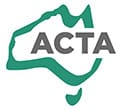How many English as an Additional Language or Dialect (EAL/D) Learners are there in Australian Schools?
Data collated and presented by Michael Michell – Immediate Past President, Australian Council of TESOL Associations (ACTA)
There is no national requirement for state and territory education systems to report publically on the cohort of students learning English as an additional Language or Dialect (EAL/D) in their schools.
To fill this major gap in publicly available information, in 2021, ACTA investigated the number of EAL/D students who were enrolled in Government and Catholic schools across Australia in 2018-19.
Based on this data:
- there are well over 600,000 learners of English as an additional language/dialect (EAL/D) in Government and Catholic schools in Australia, including:
- 13,576 new arrivals
- 348,455 EAL/D learners in mainstream classrooms
- an estimated 27,329 Indigenous EAL/D learners
- 211,686 international students.
- there has been dramatic growth in EAL/D student enrolments over the past decade:
- 114% in NSW Government schools
- 62% in Victorian Government schools.
- there are major gaps in publicly available data on newly arrived, refugee, EAL/D in the mainstream, international and EAL/D Indigenous students.
These figures significantly under-report the number of EAL/D learners in Australian schools as they only identify a portion of EAL/D learners in the mainstream, and do not include those in independent schools.
For disaggregated figures by state or territory, Government and Catholic education system, and EAL/D learner category, see tables here.
Data was gained from the following sources: State Education Department annual reports (NSW, Victoria, WA); EAL/D program statistical reports (NSW, Victoria); Commonwealth Department of Education, Skills and Employment figures (number of students attracting low English proficiency loading) provided in response to Senate Estimates Question on Notice; Commonwealth Department of Education, Skills and Employment figures (number of school-aged international fee paying students) provided in response to Senate Estimates Question on Notice; and estimated of number of Indigenous EAL/D learners (school aged Indigenous students living in remote or very remote areas where there is limited contact with Standard Australian English who spoke an Australian Indigenous language or dialect at home and did not speak English well or at all) based on 2016 ABS census data.
This national report will be periodically updated as new information becomes available.
